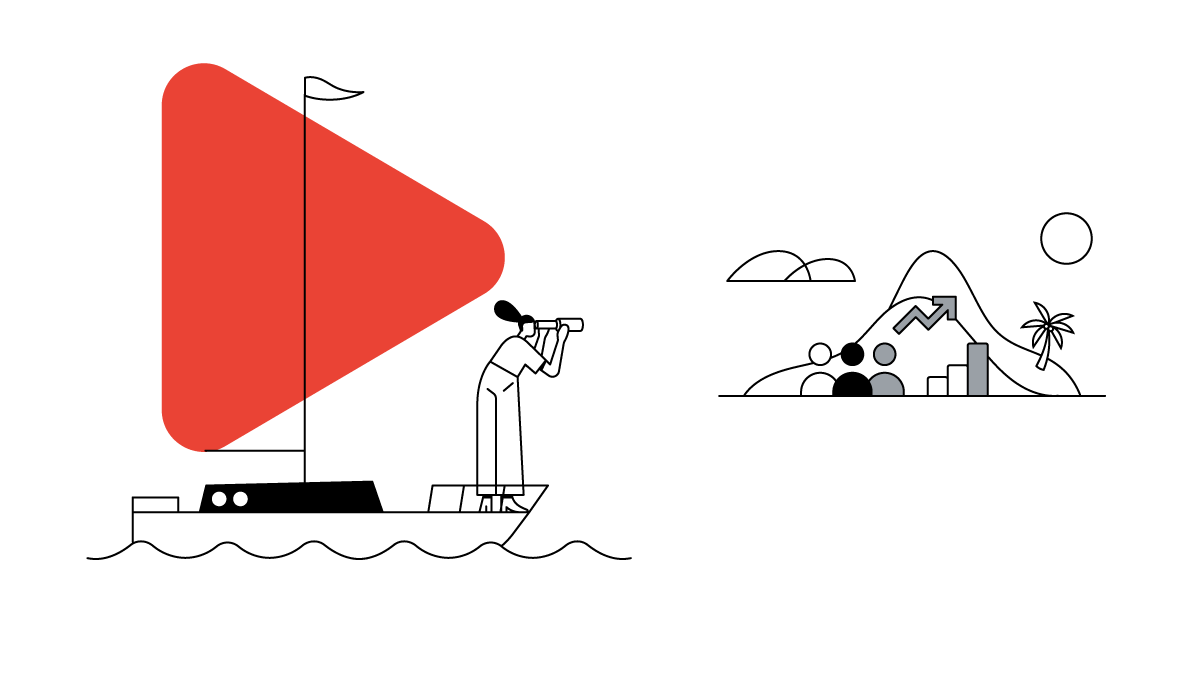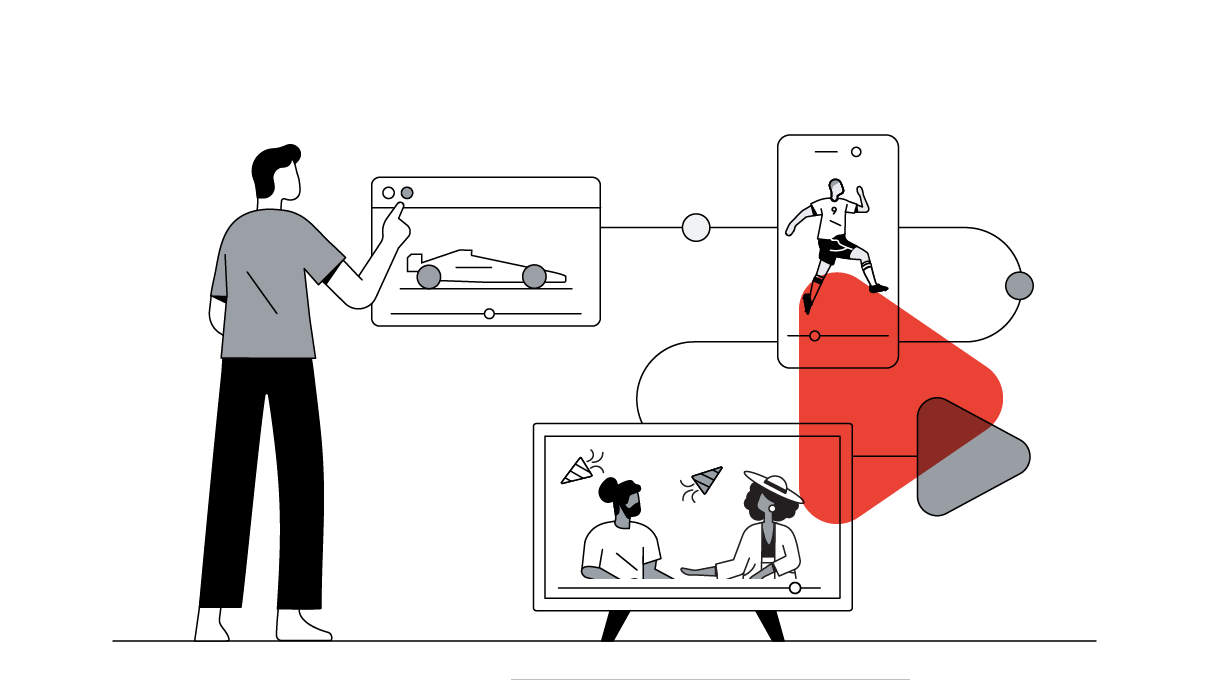5 Erfolgstipps für effektive YouTube Ads
Host
Gast
Veröffentlicht
November 2021Seite teilen
5 Erfolgstipps für effektive YouTube Ads
November 2021Über 90 Prozent der Verbraucherinnen und Verbraucher entdecken neue Marken und Produkte auf YouTube.1 Und 40 Prozent von ihnen haben sogar eine oder mehrere dieser Marken und Produkte gekauft.2 Pei Ling Ho, Global Creative Director bei Google Creative Works, verrät in unserer Videoreihe „How to think about …“, wie Sie Ihre Marke auf YouTube erfolgreich in Szene setzen und die Aufmerksamkeit Ihrer Zielgruppe erreichen.
Entdecken Sie weitere Themen in unserer Video-Serie:
• Branding: So inspiriert Ihre Marke auf YouTube
• Mit YouTube Ads emotionale Verbindungen aufbauen
• CTA: So motivieren Sie auf YouTube zum Handeln
1 Google/Magid Advisors, Global (U.S., CA, BR, U.K., DE, FR, JP, IN, KR, AU), “The Role of Digital Video in People’s Lives,” n=20,000, A18–64 general online population, August 2018.
2 Google/Ipsos, Global (U.S., CA, BR, U.K., DE, FR, JP, IN, KR, AU), “How People Shop with YouTube” Study, 18–64-year-olds who go online at least monthly and have purchased something in the last year, n=24,017, July 2018.
Hey there, and welcome to our How to Think About video series. I’m Nacia, and today we’ll be covering how to think about building high-performing ads on YouTube. So, let’s get started.
The key to building great ads boils down to creative storytelling. But telling stories on YouTube is a little different than a typical TV spot. So we’ll be speaking with Pei Ling Ho, global creative director for Google Creative Works, to understand those differences, like story structure, framing, pacing, type size, and contrast. We asked Pei how she thinks about crafting great stories for YouTube ads. Pei.
Hi, I’m Pei Ling. I’m the global creative director of Creative Works.
Digital video is becoming a key part of our consumers’ lives, not just for entertainment, but also as a source of information for purchases. Now, over 90% of people are discovering new brands and products on YouTube, and 40% have purchased these brands and products. So online video, therefore, allows you to reach the people that you can’t easily reach on TV alone and target specific audiences or behaviors or intentions, which means higher return on investment when you integrate online video into your marketing mix.
When you break down how the traditional TV spot unfolds, it looks like a hill. It tends to start really slow, takes time to build, gets the climax somewhere in the middle, and only reveals the offer of the brand right at the end. Now that works if you are passively watching in the living room, because you’re just waiting for your show to come back.
But imagine what happens if you transport this onto digital. Before you get to the most interesting part of the story, before you can actually communicate what your offer is like, you would have lost a significant percentage of your audience after five seconds. So if you want to build effective ads for YouTube, you need to tell your story in a way that earns your audience’s attention from the first second. And it’s not the hill.
What consumers are responding best to are stories that are told in an emerging heartbeat arc, which instead of starting low, it actually starts high, for a great hook to grab attention and keep people engaged. And along the way, the ad inserts subtle branding and product cues throughout, so your message isn’t lost.
The heartbeat arc is also exciting because you can now build your ad in the way that keeps people guessing and therefore tuned in. Introducing unexpected shifts in the story or the tone creates multiple peaks of excitement that bring people back from the brink of boredom and back into your story. And because your audience doesn’t know what’s going to come next, they will keep hanging around to find out more.
There are so many ways to drive a good hook. To me, a great hook is like serving dessert first — that bit of pleasure that everyone looks forward to always. So, one: Front load your ad with the most exciting, impactful, dynamic scenes to grab the eye and lead the story. Two: Use unexpected imagery that your audience has never seen before — not for your brand, not for your category.
Three: Break the fourth wall. Acknowledge your audience and address them directly. Make them feel like the story involves them. Four: Give them a simple puzzle to solve — not too complex enough to trick them — or make them care, so they have to tune in to find out what the answer is.
Five: Don’t be afraid to explore deep emotions. Humor, nostalgia, even embarrassment can make someone stay and stay with your story because they’re drawn into something that feels real.
It’s not just the story structures that have changed when we build ads for YouTube. Evolving the visual language in your ads for mobile can boost your ads’ impact. It’s as simple as framing your shots much tighter, so you’re focusing and directing attention to the right places and moments; increasing the pace of the film to make full use of the time that you have to communicate; using large type supers so people can actually read and understand what you’re trying to convey.
Also, people are usually watching at around 50% dimness, so ensure that there’s enough brightness and contrast between the colors of your ads so they’re easily seen on screen.
Fostering a culture of creative experimentation can only help us get better at making ads that consumers want to watch. Testing is valuable, not just because it’s quick and cost-effective. It lets you understand what makes your audiences tick. Advertisers can actually see how their ads are performing when they go live on YouTube — and find opportunities to make the same ad even better, just using small improvements from the data they’re seeing for incremental gains.
So at Google, we see ads as always in beta. And that’s an awesome philosophy to create by, because it gives us the liberty to continuously optimize toward higher-performing creative that drives your marketing objectives.
That’s how we at Google think about making better ads on YouTube. Thank you for spending time with me. Back to you, Nacia.
That was super helpful, Pei. Thank you.
So as you look to smarten up your ad campaigns, remember the differences between traditional TV spots and building for YouTube. With YouTube, it’s important to hook your audience from the start and rethink your visual language to fit the digital format. And as always, don’t forget about testing. It can only help you improve.
Please stay tuned for more expert insights in our How to Think About series. Happy storytelling.
Weiterer spannender Content für Sie
Diese Themen sollten Sie nicht verpassen
-
Video
![]() Video
VideoMit Video Ad Sequencing die Werbewirkung auf YouTube steigern
Jetzt zum Video -
Video
![]() Video
VideoHow to think about marketing measurement
Jetzt zum Video -
Video
![]() Video
VideoHow to think about mobile UX
Jetzt zum Video -
Tool
![]() Tool
ToolInsights, Inspirationen und Ideen – direkt in deinem Postfach
-
Fallstudie
![]() Fallstudie
FallstudieUmsatz-Power: So überzeugt YouTube Streetwear-Händler BSTN
-
Fallstudie
![]() Fallstudie
FallstudieVideo Reach 2.0: Wie Deichmann mit „Leni x Fila“ bei der Gen Z dank YouTube und Google AI voll ins Schwarze trifft
-
Artikel
![]() Artikel
ArtikelErfolg auf allen Screens: Wie 3 Marken mit mehr Formatvielfalt ihre YouTube-Ergebnisse verbesserten
-
Artikel
![]() Artikel
ArtikelYouTube-Studie: der kürzeste Weg zu neuen Kundinnen und Kunden








